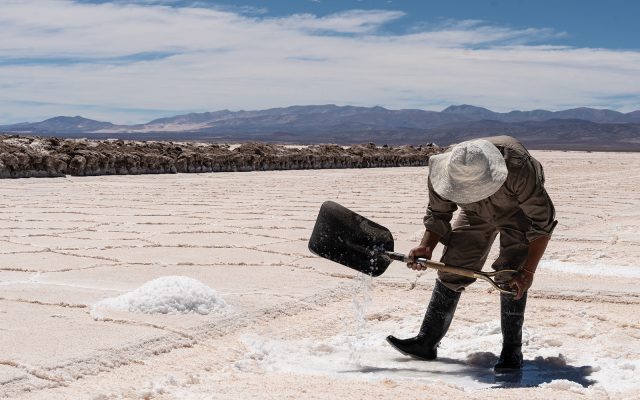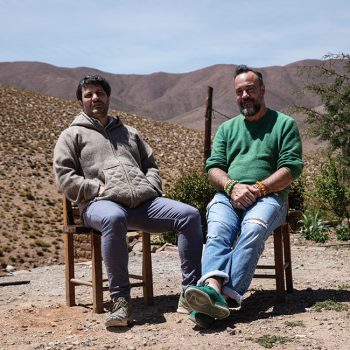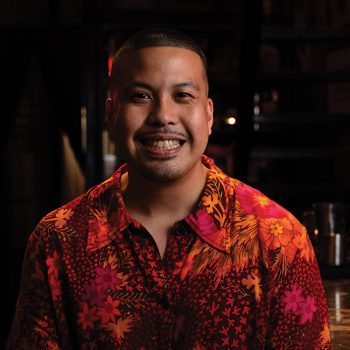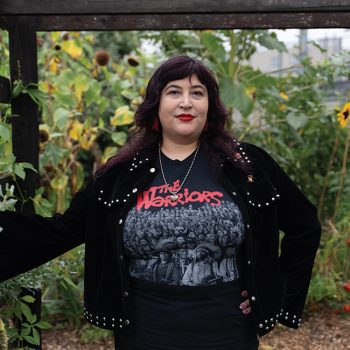Campari Academy concludes third Perspectives series
By Lauren BowesThe latest episode of Campari Academy’s Perspectives docuseries focuses on local ingredients around the world.

When it comes to your bar cart, have you ever considered where your products come from? We’re not talking about your favourite retailer, but where the products really originated from.
For certain spirits, provenance is hugely important – whether that’s a single malt Scotch or a Cuban rum – but our consideration of locality rarely extends further than this. Where is the sugar for your simple syrup sourced? What about the glass for your coupes?
This is the focus topic for the concluding episode of the latest series of Campari Academy’s Perspectives docuseries. Each episode is based on one of four themes that lie at the heart of the Campari Academy: design and technology, community and culture, business and development, and raw materials and flavour.

In Search of Locality focuses on the latter theme. Available to view online from mid-October on the Campari Academy website, the episode brings together four industry leaders to share their views on provenance: Niks Anuman, owner of Asia Today bar in Bangkok; Juan Ignacio Gerardi, co-founder of Bioconexión in Buenos Aires; Tato Giovannoni, co-founder of Florería Atlántico bar and Principe de los Apostoles Gin, in Buenos Aires; and US-born Chockie Tom, bartender, founder of drinks pop-up Doommersive, and Indigenous communities champion.
The episode begins with Gerardi challenging bartenders to consider the origin of their products: “The bartender has to ask: ‘Can’t I search for a flavour that respects local production and the season? Does it make sense to travel so many kilometres?’”
Tom adds: “I can have a great Manhattan anywhere in the world, but if I can go somewhere and have a drink that’s made with local ingredients, I’m going to learn about the ingredients. I’m going to learn about the people that utilise the ingredients.”
She says that while many bartenders want to travel to expand their repertoire, the real talent lies in using what’s in their own backyard.
Working seasonally doesn’t always mean using what is currently growing, as Giovannoni explains. He created a menu at his bar that featured no fresh ingredients, instead using produce that had been preserved from a previous season. “We all need to think in a very open way. If it’s in season, use it in season – but those products can also transform themselves and be used in another way. I’m in favour of seasonality, but I think it’s bigger than that.”
For those who think local ingredients can be dull, Anuman believes bees are a strong example of the opposite. Different bee species will pollinate different plants and flowers, despite living in the same areas, and this creates honey with different flavours. Most honey in Thailand is made from an imported bee species called Apis mellifera – which means most supermarket honey tastes the same. Working with local producers means you will get a wider variety of flavours. “When you take out the middleman, you can work from people to people,” he explains. “It’s more direct, it’s more authentic, it’s more real. Connection gives much more meaning to what you do.”

Local communities
Anuman’s point leads to the second part of the episode, which focuses on local communities. Tom says: “Smaller farmers who do interesting things aren’t getting enough support, which helps maintain these communities. If you work with these smaller farms, you’re doing better for the future on a bigger level.”
She advises starting at your local farmers’ market. “If you’re in New York, there are so many incredible local apples. Go learn about apples from the apple guy. He’s going to be really happy to talk about it.”
Giovannoni sees supporting the community as a more holistic practice. As he changes his menus seasonally, looking for a supplier for a single ingredient could mean supporting them for only a few months of the year. If he builds a long-term relationship with five or six small producers, he can learn what they grow year-round, and support them.
Gerardi believes there are four key elements when working with producers: interconnectivity, understanding scale, recognising the relationship between producer and bartender, and allowing time for results. For interconnectivity, Tom explains that “everything should be done with the foresight for seven generations ahead of us”. To understand scale, Anuman gives the example of bees – using the entire hive would result in its destruction, whereas leaving parts untouched means the bees can regrow it.
The final part of the episode explores the idea of agriculture and its value, or perceived value. Gerardi visits Salinas Grandes in Argentina, one of the largest salt flats in the world, where Walter Alancay and the worker cooperative Minero-Aborigen operate. He questions if people truly understand the value of salt, and how much work is involved in extracting it.

The cooperative works the salt pans by hand, but the result is one of the lowest-priced products in the world. One pool produces around two and a half tonnes of salt, with the process taking around 18 months – but a tonne of salt is worth around US$8. “The market often puts a price on what is worthless, doesn’t it?” Gerardi ruminates. “Without salt, you can’t do anything.”
Sustainable alternatives
On the other hand, Tom questions the ingredients we prize, citing white sage and palo santo as foods that have become trendy in mixology but are sacred for certain Indigenous nations. “With palo santo, it takes 80 years for a tree to grow and fall over, and eight years for it to ripen. It’s not sustainable enough for somebody to put in their drink because it smells interesting,” she explains. As alternatives, she suggests culinary sage, which grows abundantly, and sustainable redwood.
There’s a lot to consider if you’re hoping to take a more sustainable approach to mixology, but the results will be worth it. Anuman concludes: “You just need to go out and learn. Be a glass half full. The more you absorb, the more you’ll know – and the more you know about yourself. That’s the beauty of it.”
Related news
Desi Daru features at Sushisamba
